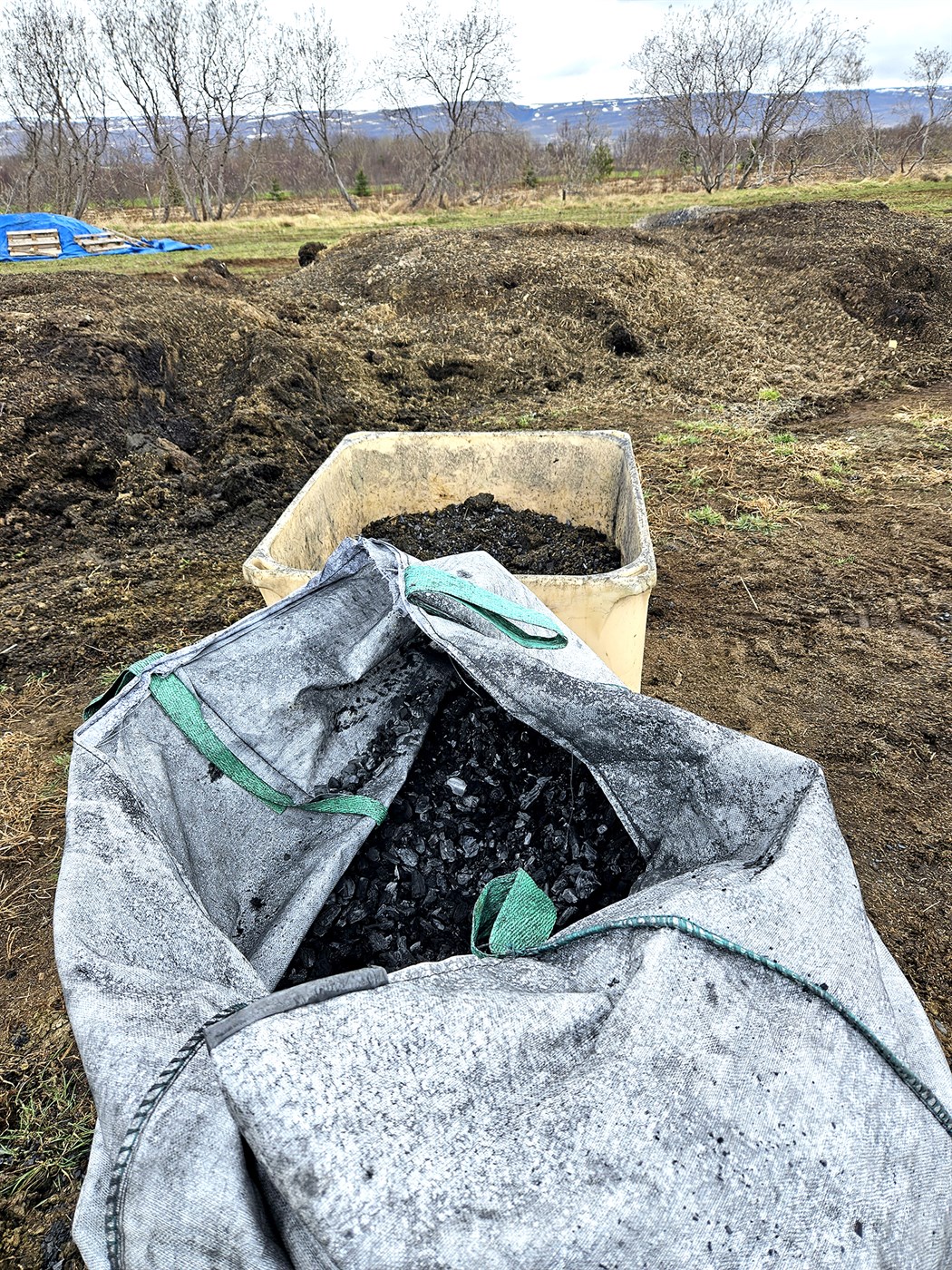Biochar for improving Icelandic farming soils
15.05.2023

Forest researcher Lárus Heiðarsson and his assistant Björn Sturlaugur Lárusson at work adding Icelandic biochar to agricultural soil. Photo: Eymundur Magnússon/Bændablaðið
Biochar made from Icelandic thinningwood could be put to good use for long-term carbon sequestration in farmland soil and at the same time increase the quality of the soil and thus the yield. Possibilities for this will be explored in a research project that Skógræktin – the Icelandic Forest Service (IFS) is currently working on in collaboration with the Agricultural University of Iceland (AUI) and others. Response is awaited to an application for funding costly soil sample analysis, which is vital for the results of the study. The idea is to take extensive soil samples in the project at least the next three to five years.
The initiative for the research came from the company Tandrabretti in Reyðarfjörður, which, among other things, manufactures pallets, but has also been gaining ground in the processing of timber, including thinningwood from young Icelandic forests. As read in the first media report of the study in the agricultural newspaper Bændblaðið, the idea is to investigate whether charcoal can be used in Icelandic agriculture to reduce the need for imported synthetic fertilizers in soil cultivation.
 Charcoal has been used for this purpose for centuries. Indigenous people of the Amazon region in South America mixed organic matter with charcoal to enrich their soil centuries ago, and in recent years scientists have begun to look more closely at whether their example could be followed. Charred wood does not rot like unburnt wood, but is stored for a long time in the soil. At the same time it has a stimulating effect on the cycle of nutrients and moisture in the soil.
Charcoal has been used for this purpose for centuries. Indigenous people of the Amazon region in South America mixed organic matter with charcoal to enrich their soil centuries ago, and in recent years scientists have begun to look more closely at whether their example could be followed. Charred wood does not rot like unburnt wood, but is stored for a long time in the soil. At the same time it has a stimulating effect on the cycle of nutrients and moisture in the soil.
Multiple benefits to both farming and the climate
By heating wood in an oxygen-free environment, gases are produced that can be collected and used as a source of energy, leaving behind carbon-rich charcoal. This allows for multiple carbon benefits. Carbon sequestered by the trees through photosynthesis will then be locked there for ages in the form of charcoal instead of being released into the atmosphere. In the soil, coal has the effect of reducing the need for imported artificial fertilizers, which also saves carbon emissions resulting from the production and transport of the fertilizers. Many more positive effects of soil- biochar could be mentioned.
Increased farmland growth also results in both higher yield and carbon sequestration, thus a smaller carbon footprint of the crop. In addition, there is the possibility of obtaining a sustainable source of energy from the coal processing. From all this, it is clear that there is a lot of potential.
Experimental plots in East and West Iceland
Forester Lárus Heiðarsson, researcher at the Icelandic Forest Research, is now organizing soil experiments with biochar in collaboration with the Agricultural University of Iceland. Experimental plots have been established at two locations in Fljótsdalshérað East Iceland, at the farms Vallanes and Gíslastaðir. Control plots were set out with different amounts of charcoal in the soil and different amounts of fertilizer. In Gíslastaðir, Timothy grass (Phleum pratense) will be sown in the research field, while barley will be sown in Vallanes, the latter being an organic farm. An experiment will also be set out at Hvanneyri in Borgarfjörður West Iceland.
In the experiments, the biochar is either mixed with livestock manure or placed directly on the ground, over which chemical fertilizer is distributed. "What we hope to see is whether it will be possible to reduce the use of fertilizers in traditional cultivation, whether it is grass or grain cultivation," Lárus tells in an interview with Bændablaðið. Not much is expected after the first summer of the study, but from then on, the positive effects of the charcoal could start to become apparent year by year.
Response is now awaited to an application for funding the experiment. As the IFS and AUI have limited means for such a long-term study, external funding will be vital for the study to be carried out fully, thus for the most useful outcome possible.
